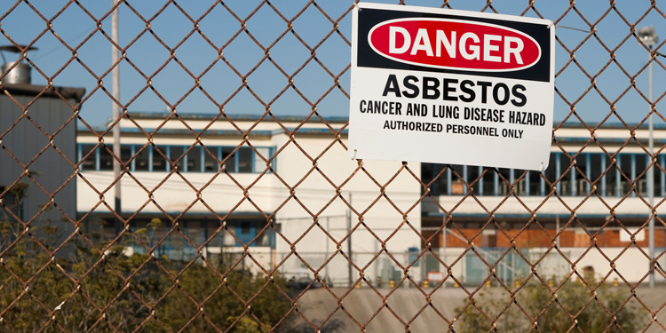Understanding asbestos in the working environment is crucial for maintaining workplace safety and health. A naturally occurring mineral, was widely used in various industries due to its heat resistance, strength, and insulating properties. However, it’s now well-known that exposure to asbestos fibers can lead to serious health issues.
Asbestos, a material once prevalent in various industries, is now a well-known health hazard. The concern about asbestos related diseases has grown as you understand the material’s impact on health. This article will delve into the risks associated with asbestos, the common ways people are exposed to it, and the serious health concerns it poses.
Table of Contents
What is Asbestos?
Asbestos refers to a set of six naturally occurring fibrous minerals; each made up of long and thin fibrous crystals. These fibers are highly durable and resistant to heat, chemicals, and electricity, making them useful in a range of applications, such as insulation, automotive brakes, and fireproofing materials.
Despite these benefits, it’s tiny, nearly invisible fibers pose a significant threat when airborne and inhaled. The fibers can become trapped in the lungs and remain there for years, leading to health issues.
How Does Asbestos Exposure Occur?
Exposure to asbestos most commonly occurs in work environments involving construction, particularly in the renovation or demolition of old buildings where asbestos was used extensively in the past. It can also happen during the manufacturing of asbestos-containing products or in the automotive industry, particularly for those who work with vehicle brakes and clutches. In older homes, asbestos may be found in roof shingles, pipes, and floor tiles and can be disturbed during renovations or repairs.

Common Diseases
Asbestos exposure is linked to several chronic and potentially fatal diseases. The most well-known are lung cancer, mesothelioma – a rare form of cancer that affects the lining of the lungs or abdomen, and asbestosis – a serious, progressive, long-term disease of the lungs. These conditions develop over time, often taking 20 to 30 years to appear after exposure. Early symptoms are often mistaken for less serious illnesses, which is why asbestos-related conditions can be difficult to diagnose promptly.
“People exposed to high amounts of asbestos over a long period are most at risk,” as ELSM Law experts say.
Preventing Exposure
Preventing asbestos exposure is a critical public health concern. For homeowners, it’s important to be aware of the potential presence of asbestos in older homes, especially before undertaking renovations. If asbestos is suspected, it should only be inspected and removed by trained and accredited professionals. In occupational settings, employers must provide proper safety training and equipment to minimize the risk of asbestos exposure.
This includes protective clothing, masks, and adherence to strict safety protocols. Regular health check-ups for workers in high-risk industries are also essential for early detection of any asbestos-related diseases.
Asbestos and the Law
Legal regulations surrounding asbestos are stringent, reflecting the material’s health risks. Laws govern the safe removal, handling, and disposal of asbestos, particularly in construction and demolition. Employers in industries where asbestos exposure is a risk are required to comply with safety standards.
This includes providing proper training, equipment, and health monitoring for their workers. These laws are in place to protect not only workers but also the general public from the dangers of asbestos exposure. Understanding and adhering to these regulations is essential for anyone working with or around asbestos-containing materials.
Conclusion
In conclusion, understanding and managing asbestos in the workplace is a vital aspect of occupational health and safety. With its hazardous nature, it’s imperative that stringent measures be adopted for handling, removal, and disposal of asbestos-containing materials. Employers and employees must be well-informed and trained to minimize the health risks associated with asbestos exposure. Through vigilant management and adherence to safety protocols, the risks posed by asbestos can be significantly mitigated, ensuring a safer working environment for all.
Understanding the risks associated with asbestos, methods of exposure, and the resulting health concerns is crucial. Awareness and education are key to preventing asbestos-related diseases. If you suspect you might have been exposed to asbestos or are experiencing symptoms related to asbestos exposure, it’s important to seek medical advice immediately. Proactive measures and adherence to safety guidelines can significantly reduce the risks associated with this hazardous material.

Andrej Fedek is the creator and the one-person owner of two blogs: InterCool Studio and CareersMomentum. As an experienced marketer, he is driven by turning leads into customers with White Hat SEO techniques. Besides being a boss, he is a real team player with a great sense of equality.
